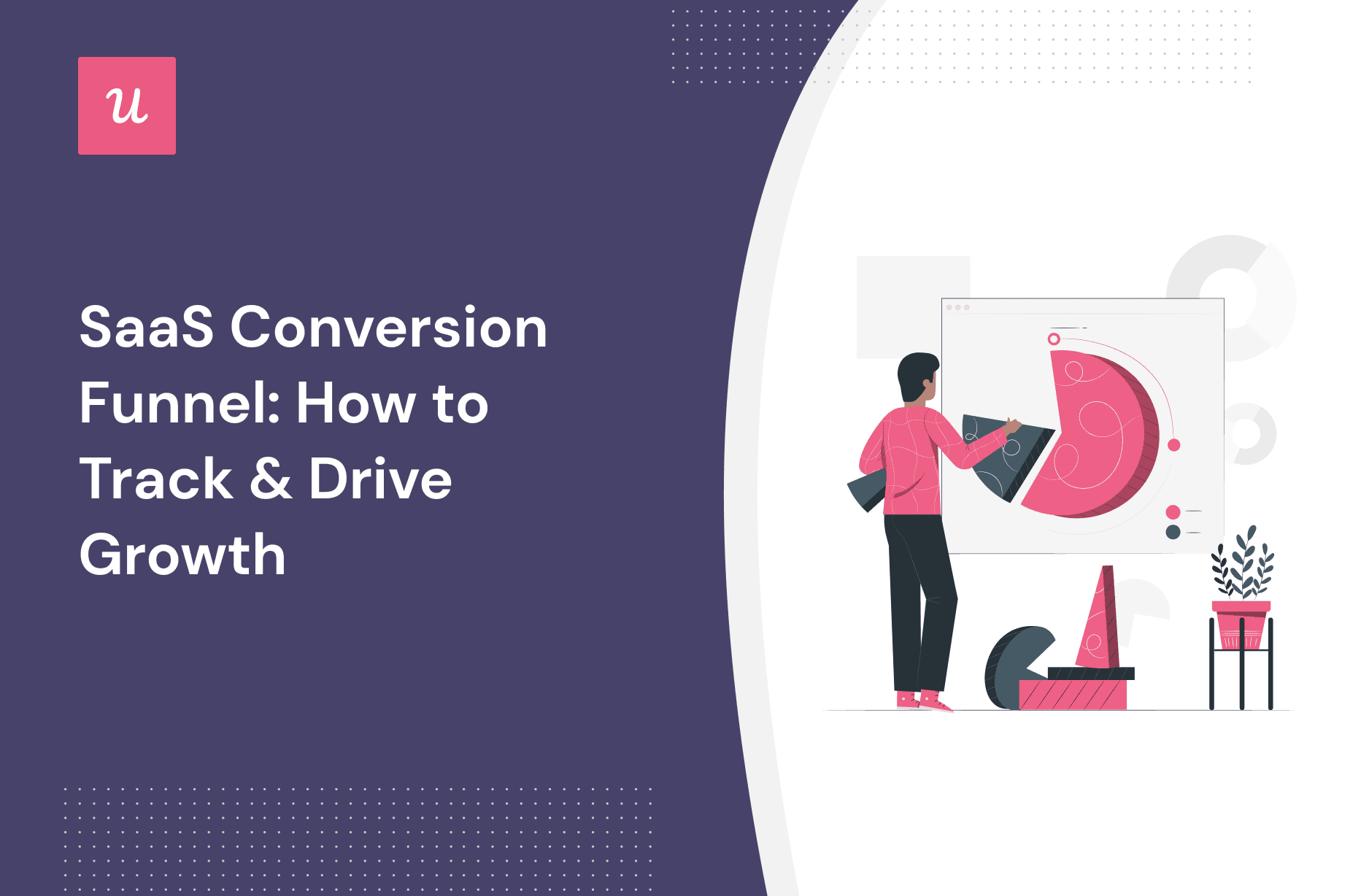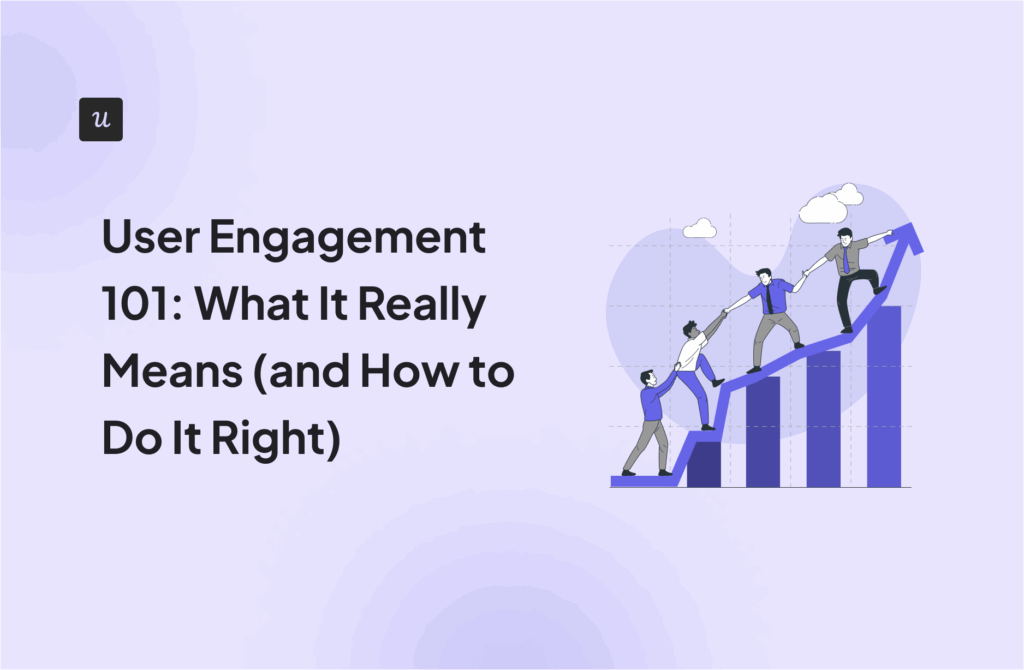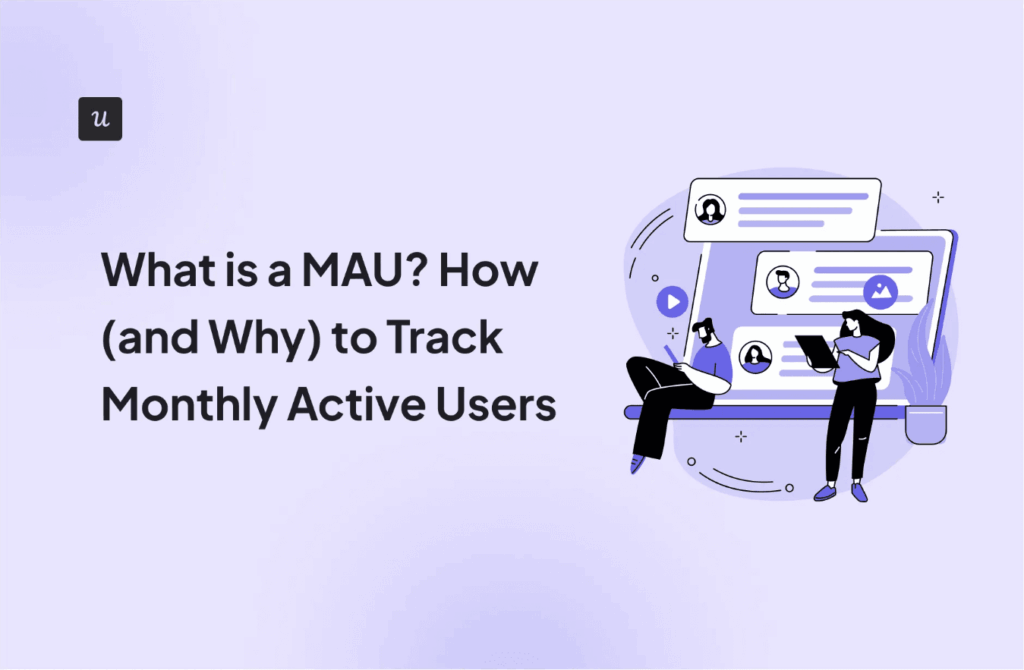
The SaaS conversion funnel adapts the traditional marketing funnel to the unique B2B SaaS environment.
The SaaS funnel was designed to help SaaS business owners navigate the tricky world of a high-churn, often oversaturated B2B market. It helps companies identify areas of strength/weakness in their marketing approach and accelerate product growth.
This article digs into the SaaS conversion funnel and explores how it differs from traditional funnels. It’ll also consider the different stages of the funnel and how to track/optimize funnel performance.
Try Userpilot Now
See Why 1,000+ Teams Choose Userpilot

Summary SaaS conversion funnel
- The SaaS conversion funnel is a visual representation of your ideal customer journey from awareness to product adoption and revenue expansion.
- It differs from the SaaS sales funnel which ends when a user makes their first purchase, or the SaaS marketing funnel which ends with brand advocacy.
- Unlike both funnels above, the conversion funnel runs through the entirety of the customer’s life cycle.
- There are six stages of the funnel: Acquisition, Activation, Adoption, Retention, Referral, and Revenue (AAARRR); and, success is measured differently across each stage.
- For example, PQLs, demos, and sign-ups measure success in the acquisition stage, while the customer lifetime value, ARR, and ARPU are measures of success in the revenue stage.
- Likewise, how you optimize for success will differ from one stage to another. For example, self-sustaining growth loops can speed up your acquisition, while contextual upselling drives account expansion in the revenue stage.
- Userpilot provides SaaS sales teams with a variety of tools for tracking, optimizing, and measuring performance at the different funnel stages.
- And Userpilot also helps you onboard and engage mobile app users by creating personalized messaging, push notifications, and surveys. Book a demo to learn how it can help you, too.
What is a conversion funnel?
The SaaS conversion funnel is a multi-staged selling process that begins with product awareness and extends beyond the user’s initial purchase.
The funnel visually represents your ideal customer journey from the first interaction to a paid subscription and is divided into six stages: Acquisition, Activation, Adoption, Retention, Referral, and Revenue.

Conversion funnel vs. sales funnel vs. marketing funnel
Although they’re used interchangeably, the SaaS marketing funnel, sales funnel, and conversion funnel are not the same. The difference between each funnel depends on where it ends.
For example, the SaaS sales funnel focuses on converting marketing-qualified leads from the marketing stage into paying customers. Thus, it ends after the lead makes a purchase.
On the other hand, the SaaS marketing funnel attracts potential leads and transitions them into customers. It nurtures them into qualified leads and drives them toward brand advocacy.
Finally, the conversion funnel covers all stages of both funnels, with a focus on conversion events. This may be a conversion to a trial user, freemium user, paying user, or even an account upgrade.
To succeed, your conversion, marketing, and sales funnels must be aligned to help you achieve critical business growth.
What are the stages of a SaaS conversion funnel?
The SaaS conversion funnel is an adaptation of the AARRR Pirate Metrics framework by David McClure. Unlike the original, it has six stages (AAARRR) and tracks:
- Acquisition – Also known as the awareness stage, it begins when a user signs up for a free trial or demo of your product.
- Activation – Users reach the activation stage when they first experience your product’s value proposition. At this stage, the user has engaged with the product’s key features and experienced the “Aha!” moment.
- Adoption – At this stage, the user decides to adopt your product for the long term. Product adoption by existing customers leads to customer retention and opens upsell opportunities.
- Retention – The customer retention stage is an extension of the adoption stage. It involves ensuring users continue using and paying for your product beyond their initial purchase.
- Referral – At this stage, your users become avid product advocates and start recommending your product to others.
- Revenue – Also known as the bottom of the funnel, your goal at this stage is to generate more revenue through account expansion (such as upselling, cross-selling, add-ons, etc.).
Metrics to track at different stages of the SaaS conversion funnel
How do you determine the success or failure of your funnel? Consider some SaaS sales funnel metrics that help you measure success at the different stages of your SaaS funnel.

Acquisition stage
- Free trial sign-ups: How many free trial sign-ups have you received over a set period? The sign-up rate indicates whether you’re successfully turning visitors into potential customers.
- Demos: How many visitors requested product demos over a given period? This metric and the one above provide insight into your on-site conversion rate.
- Product-Qualified Leads (PQLs): PQLs track the number of users who have experienced value from your product’s free trial or freemium model.
- Customer acquisition cost (CAC): How much do you spend on sales, marketing, etc. to acquire each new customer?
Activation stage
- Customer activation rate: This is an umbrella metric that measures the percentage of your customers that activate, or the rate at which your customers understand your product’s value.
- Time to Value: How much time does it take for a user to discover your product’s value?
- Primary onboarding completion rate: How many users start and finish the primary onboarding process?
Adoption stage
- Feature adoption rate: The feature adoption rate measures the percentage of users to adopt a core product feature.
- Time to adopt (TTA): TTA tracks how much time it takes users to reach adoption on average. Note that what qualifies as “adoption” varies for different B2B SaaS businesses.
- The breadth of use (BoU): BoU measures how many users you have per account. Having more users per account protects your relationship even when a user from the account churns.
- Depth of use (DoU): The DoU is an addendum to the BoU; it measures how well (i.e. how many core product features/areas) your customers use your product.
- Customer satisfaction score (CSAT): How satisfied are users with your product? CSAT is a percentage measure of users’ happiness with your product.
Retention stage
- Customer churn rate: The percentage of customers who cancel their subscriptions over a specified period. High churn rates indicate low satisfaction levels.
- Customer retention rate: The direct opposite of the churn rate, it measures the percentage of existing customers who remain over a period.
Referral stage
- Net Promoter Score (NPS): The NPS is a measure of customer loyalty. It gives an insight into how many of your customers are willing to promote your product/service.
- Customer satisfaction score: Send customer satisfaction surveys at this stage to tell you how many customers continue to be satisfied with your product.
Revenue stage
- Customer lifetime value (CLV): The CLV measures the total amount of money a customer is expected to spend on your products through the lifetime of your business relationship.
- Average revenue per user (ARPU): This is a measure of the amount of money a company expects to generate from each customer over a period (e.g. a month).
- Annual recurring revenue (ARR): The ARR measures a company’s projected revenue from subscriptions and other recurrent contracts over a year.
- Expansion monthly recurring revenue (Expansion MRR): This metric tracks the additional MRR generated in the current month from already existing customers.
How to track conversions across the funnel
Knowing the right metric to use is only the first half of the equation. You also need to understand how to correctly use the metric to get your desired results. Some ways to do this include:
Track customer interactions with feature tags
How do customers engage with your product? Are there any obvious areas of friction? How about engagement levels with critical/core features or app sections?
Feature tagging helps you observe patterns in customers’ interaction with your product. This knowledge provides invaluable insight into the customer experience within your product.

For instance, you may find that a core section of the app gets little or no engagement, affecting the overall app experience. By investigating the source of friction, you can improve the customer experience.
Set goals for each stage and identify drop-offs
A good sales funnel has clear goals for each funnel stage. When creating a funnel, ensure your marketing team sets clear goals that break down exactly what success means for each stage of the funnel.
Closely monitor your users’ progress through the funnel to ensure you remain on track for your goals. Identify drop-offs in goal completion and work to rectify the causes of any drop-offs.

Monitor how users progress in-app from different starting points
Thanks to their varying goals and objectives, different users will use your app differently – starting from different points in the product and following different paths.
You can match those starting points with your different user segments and their unique jobs to be done with your product.
As you watch how they progress through the app, take note of what stays hidden/unnoticed for each path, the friction points where they drop off, etc.
Afterward, use this information to nudge new users to take the optimized path for success.

Analyze the drop-off rates at different stages
Beyond tracking success, the most important job for your marketing and sales teams will be to identify drop-off areas and analyze drop-off rates in your funnel.
Analyze the different customer journeys within your app to identify the drop-off rates across different paths. This should help you identify the best path and try to replicate it for other users.

Collect and analyze NPS at different stages
The easiest way to know what users think of your product is to ask them. Launch NPS surveys and mobile NPS at different stages of the conversion funnel.
As you do so, analyze user responses to identify the reasons behind customer delight, what drives promoters, the major causes of dissatisfaction, etc.
Follow up on detractors to optimize their journey and improve the overall experience.

How to optimize the B2B SaaS conversion funnel performance
Now that we know how to measure our funnel’s performance, let’s examine how a SaaS business can optimize its funnel for the best possible results.
Implement growth loops to drive sustainable growth
Turn your sales process into a self-sustaining cycle by implementing growth loops. A growth loop is a compounding growth strategy that turns your users’ outputs into inputs for the next growth cycle.

This means driving your users to aid your marketing efforts through referral programs, social shares, user-generated content, etc.
Use minimum viable onboarding to streamline activation
Get users to reach activation quickly through minimum viable onboarding. This means understanding each user’s needs and helping them to experience value in the shortest time possible.

Start by segmenting your users upon signup. Then, identify the different needs of each segment, and personalize their onboarding experience to match those needs.
Trigger in-app experiences at the right time to avoid friction
Drive adoption through carefully curated in-app experiences. You can do this by setting custom event triggers for targeted in-app experiences.

For instance, you can set a tooltip or walkthrough to pop up when a user first interacts with a feature. This will remove friction in the user experience and make feature adoption much smoother.
Use secondary onboarding to showcase product value
To further drive adoption, you can dig deep into your user behavior analytics to provide users with continued guidance through secondary onboarding.
For example, you can search out unadopted features or unmet goals for a user, then guide them to those features using tooltips. You can take it a step further, using webinars to provide extra value.

Tag NPS responses and improve accordingly
NPS survey responses – especially the negative ones – are great sources of information on customer pain points.
Tag NPS responses to make identifying the most common pain points easier. Then, follow up on your detractor’s to better understand their frustrations.

Finally, ensure you fix the problem to improve the customer experience and drive retention.
Identify promoters and ask for referrals
NPS responses also reveal who your biggest promoters are. Identify these users (promoters are those who give you a score of 9 or 10) and segment them in-app.

Then, reach out to these users with a modal requesting a positive review. Because promoters are enthusiastic about your brand, they’re very likely to honor your request for referrals.

Drive account expansion with upsells
Finally, ensure you optimize for revenue growth as users get comfortable with your product. You can do this by segmenting users based on their account needs and triggering in-app contextual upsells.
For example, the Loom free tier allows users to record a video up to a 5-minute limit. Once this limit is reached, Loom reminds you that an upgrade eliminates the recording time limit.

Conclusion
The most successful SaaS companies recognize the importance of a good conversion funnel. When properly implemented, it supercharges your sales process and sets up your SaaS business for continued growth.
To learn how Userpilot helps you track and optimize your funnel performance, book a demo today!







